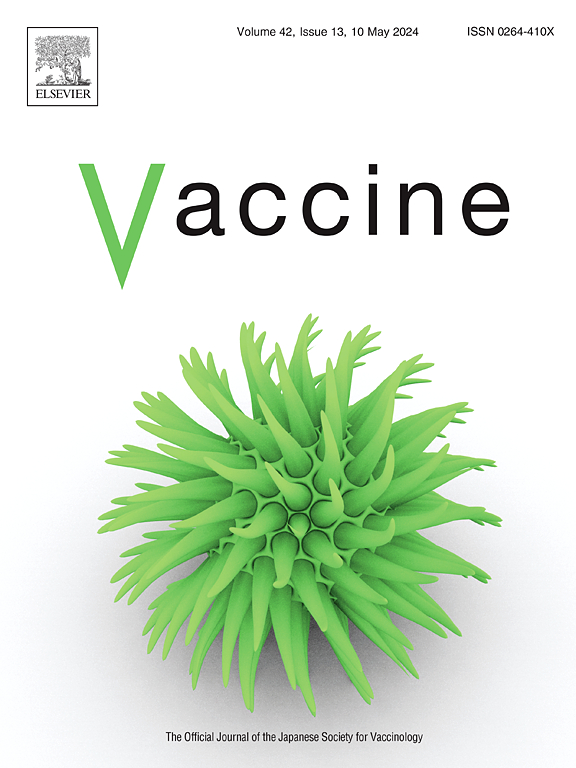Vaccination readiness among adults in Norway: A cross-sectional survey using the 7C model
IF 4.5
3区 医学
Q2 IMMUNOLOGY
引用次数: 0
Abstract
Background
Maintaining high vaccination readiness is key to sustaining high vaccination coverage. In this study, we aim to estimate the vaccination readiness of the Norwegian adult population and explore its associations with sociodemographic characteristics and the intention to be vaccinated.
Methods
A representative sample of the adult Norwegian population were surveyed with the validated 7C questionnaire on general vaccination readiness, which contains items about seven components of vaccination readiness (confidence, complacency, constraints, calculation, collective responsibility, compliance and conspiracy). Participants were also asked about sociodemographic background and their intention to be vaccinated against COVID-19 and influenza. We assessed associations involving vaccination readiness in linear and logistic regression models.
Results
A total of 4137 individuals participated in the survey (overall response rate 50.5 %). Our study sample was comparable to the Norwegian population in terms of sociodemographic characteristics. On a scale from 1 to 7, the mean overall 7C vaccination readiness score was 4.82. Low overall vaccination readiness was associated with sociodemographic characteristics such as male sex, younger age, low education, low income and living alone. Overall vaccination readiness was strongly associated with intention to receive a booster dose of COVID-19 vaccine among those aged 18 years or older (adjusted odds ratio (aOR) 10.23, 95 % confidence interval (95 %CI) 8.38 to 12.49)), and with influenza vaccination among those aged 65 years or older (aOR 7.38, 95 %CI 4.51 to 12.10)), as were each of the seven vaccination readiness components when regressed on vaccination intention.
Conclusion
Overall general vaccination readiness was relatively high in the adult population in Norway. However, it differed between sociodemographic groups. Component and overall vaccination readiness scores were associated with intention to be vaccinated, and these associations were stronger for booster vaccination against COVID-19 than against influenza. The observed 7C estimates enable tracking of vaccination readiness over time and help identify themes and populations that can be targeted to improve compliance with vaccination program recommendations.
挪威成年人的疫苗接种准备情况:使用7C模型的横断面调查
保持高度的疫苗接种准备是维持高疫苗接种覆盖率的关键。在这项研究中,我们的目的是估计挪威成年人口的疫苗接种准备情况,并探讨其与社会人口统计学特征和接种意愿的关系。方法采用经过验证的7C一般疫苗接种准备问卷对挪威成年人口进行调查,该问卷包含疫苗接种准备的七个组成部分(信心、自满、约束、计算、集体责任、依从性和共谋)。参与者还被问及社会人口统计学背景以及他们接种COVID-19和流感疫苗的意图。我们在线性和逻辑回归模型中评估了涉及疫苗接种准备程度的关联。结果共有4137人参与调查,总回复率为50.5%。我们的研究样本在社会人口学特征方面与挪威人口相当。在从1到7的范围内,7C疫苗接种准备程度的平均总得分为4.82。总体疫苗接种准备程度低与男性、年龄较小、受教育程度低、收入低和独居等社会人口特征有关。总体疫苗接种准备程度与18岁及以上人群接种COVID-19疫苗加强剂的意愿密切相关(调整优势比(aOR) 10.23, 95%可信区间(95% CI) 8.38至12.49)),与65岁及以上人群接种流感疫苗的意愿密切相关(aOR 7.38, 95% CI 4.51至12.10)),在对疫苗接种意愿进行回归时,七个疫苗接种准备程度组成部分中的每一个都是如此。结论挪威成人总体疫苗接种准备程度较高。然而,在不同的社会人口统计群体中,情况有所不同。疫苗接种准备程度的组成和总体得分与接种意愿相关,针对COVID-19的强化疫苗接种比针对流感的强化疫苗接种的相关性更强。观察到的7C估计值能够长期跟踪疫苗接种准备情况,并有助于确定可针对的主题和人群,以改善对疫苗接种规划建议的遵守情况。
本文章由计算机程序翻译,如有差异,请以英文原文为准。
求助全文
约1分钟内获得全文
求助全文
来源期刊

Vaccine
医学-免疫学
CiteScore
8.70
自引率
5.50%
发文量
992
审稿时长
131 days
期刊介绍:
Vaccine is unique in publishing the highest quality science across all disciplines relevant to the field of vaccinology - all original article submissions across basic and clinical research, vaccine manufacturing, history, public policy, behavioral science and ethics, social sciences, safety, and many other related areas are welcomed. The submission categories as given in the Guide for Authors indicate where we receive the most papers. Papers outside these major areas are also welcome and authors are encouraged to contact us with specific questions.
 求助内容:
求助内容: 应助结果提醒方式:
应助结果提醒方式:


